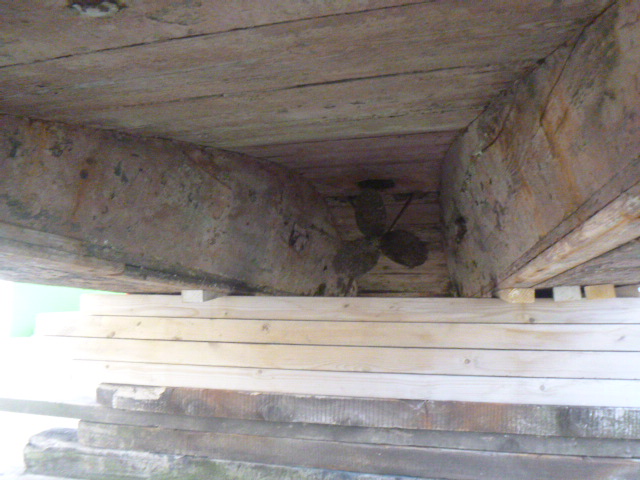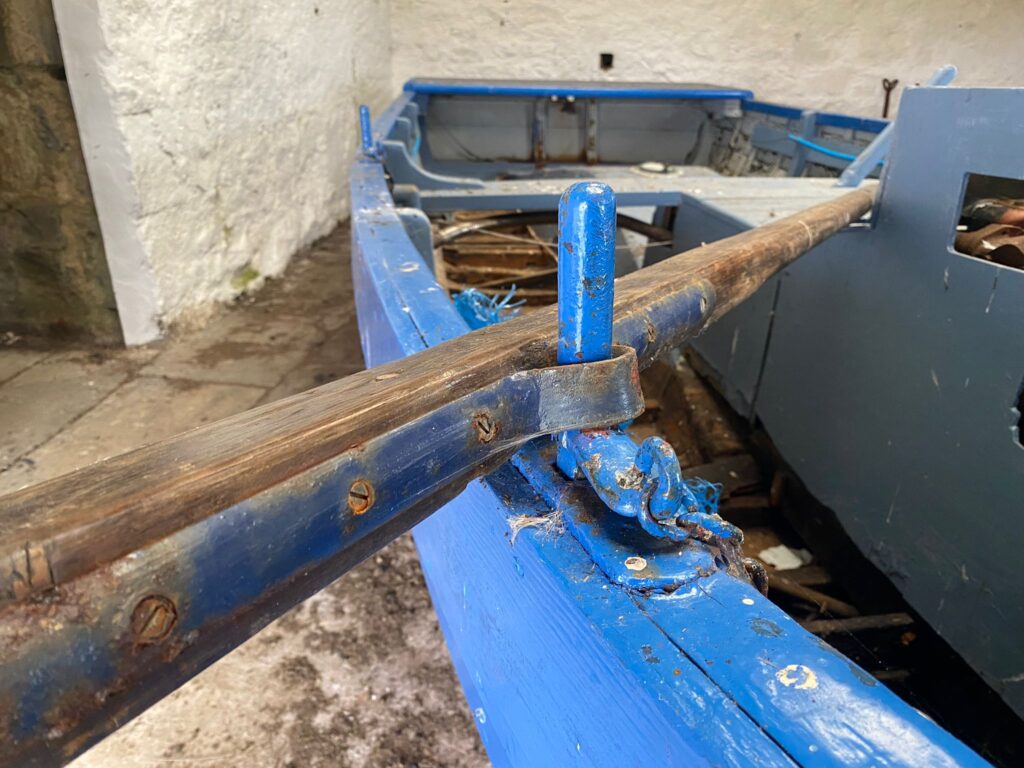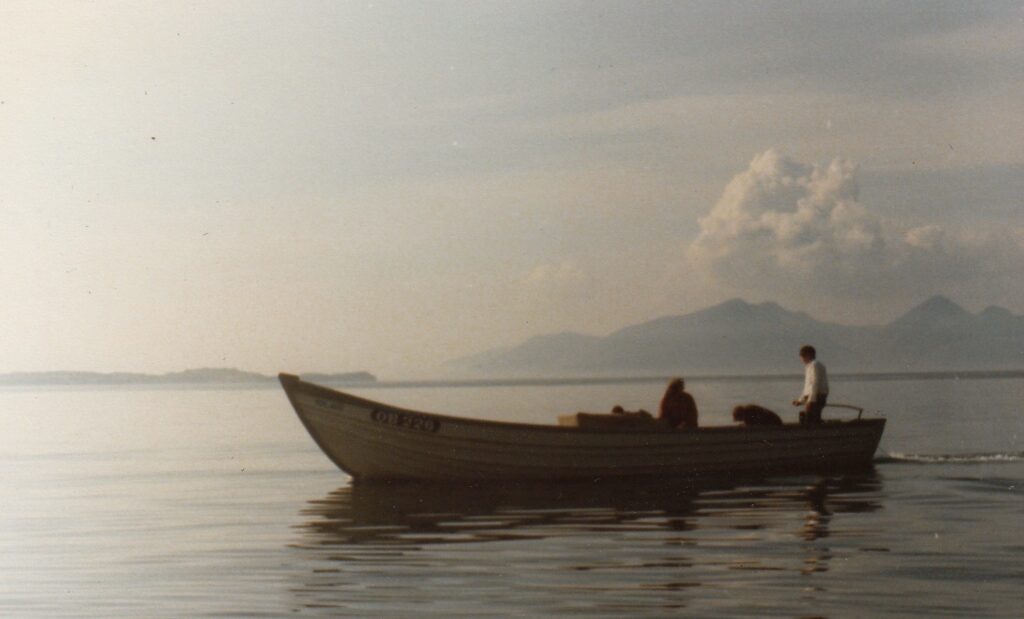The Boats
At the heart of the fishing was the boats. Although at times there were up to ten boats lying around Fascadale the fishing depended on the “cobles”. A Scottish Salmon Coble was a vey specialised and evolved vessel, ideal for fishing bagnets from a variety of shore bases. They have “cobles” in the North East of England but they are a different shape from the Scots boats.
A Scottish Salmon Coble is an open boat, with a high bow and a low stern, wide and flat bottomed . You get small ones in rivers, 12-14ft powered by oars and in the sea big ones, up to around 30ft with good sized inboard engines and plenty of other sizes in between fitted with inboards and outboards. Before the arrival of inboard engines in the first decade of the 20th century the big seagoing cobles were rowed by up to six men

Photo 700
An early rowing coble
They must have fished from rowing boats in the early days at Fascadale but no record of these boats remain.
Four salmon cobles were purchased in 1912. Three 26ft boats and the smaller 18ft boat. These were motor boats almost certainly fitted with petrol paraffin Kelvin “Poppet” engines. Bits of these engines were still lying around Fascadale in the 1980s.
The motorised cobles had a very clever adaptation for working over bagnets. These flat-bottomed boats were altered underneath with the addition of a “tunnel” in which the propellor turned. The tunnel was built up into the boat and was open to the sea underneath and so this raised the propeller above the level of the bottom of the boat as can be seen in Photo 702 below. This allowed the boat, as long as it was out of gear, to work over nets without snagging the propellor. Another clever feature was the opening port hole on the tunnel above the prop. If any bit of rope or net did get caught it was easily cut away.

Photo 701
The propellor “tunnel” and “Whipstaff” on OB 209 are clearly visible

Photo 702
The propellor visible in the tunnel
These were interesting boats to “drive”. In the morning, or if the engine was stopped for a while, the tunnel would fill with air. When the boat was put into gear and the propellor started turning nothing happened for about 10 often very long seconds until the tunnel filled with water and the drive came on. This could be very unsettling near a rocky shore. When the propellor was turning the boat was steady through the water: the tunnel acted as a sort of inverted keel and kept a grip. Once the propellor stopped they became very skittish: no keel, flat bottomed, high bow so plenty of windage forward and nothing to hold her in the water. The “Wee Coble” and OB 226 “Iolair” also had their steering and engine controls quite far apart so those boats needed two people to drive them. This required good co-ordination . OB 209 was fitted with a whipstaff” steering system which allowed her to be controlled by one person. The “whipstaff is visible in the photo above.

Photo © Paul Taylor
An interesting and important feature of these boats were the pins. There were six of these on each boat, three down each side mounted on substantial steel plates bolted through the gunwhale
The pins served two purposes, as “thole pins” when the oars (or sweeps) were in use which was only when the moorings were being laid, or much more importantly, and on a daily basis when the nets were being worked. A rope or net could be “pinned” or held in place on the boat. You can see the pins being used in this way near the start of this video

Photo © Paul Taylor
A salmon coble “pin” being used as a “thole Pin” with the oar (sweep) in place.
There is video of a salmon coble being rowed, about minute 3.00 here
By 1975 there were three salmon cobles at Fascadale. The neglected and rotten 26 ft boat lying outside between the boatshed and the workshop visible in photos 100 and 802. Another 26 ft boat, OB 209, then in the smaller boatshed and now on exhibition in the packing shed, and the “wee” 18ft boat used in 1975. The fourth boat, a 26ft boat was laid up ashore behind an hotel in Strontian.
In earlier years two salmon cobles worked out of Fascadale: one fishing to the west under the cliffs towards Sanna the other to the east towards Ockle. Presumably these were two of the 26 ft boats. The third 26 ft boat is visible in returning to the Kilchoan jetty the film clip https://movingimage.nls.uk/film/0932 The 18 ft boat, always known as the “Wee” boat was used on the more sheltered water of Kentra Bay.

Photo 103
The “Wee Coble” is the biggest of the boats on the beach
By 1975 the fishing effort in Ardnamurchan had diminished. In that year only three bagnets were fished from Fascadale and the “Wee” coble, with a crew of two was sufficient for this.

Photo 704
OB 209 on her return to Fascadale in 2021

Photo 101
OB 226 “Iolair” off the coast at Fascadale
